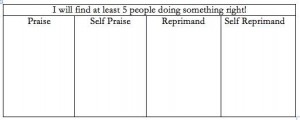Imagine that you are the GM of a NFL team seeking talented, new players to drive your team to the Super Bowl in the upcoming season. What steps would you take to succeed in the hiring process? All the information you need to know is provide from a piece of paper. Off course you check the references of the candidates, and as per the norm, you receive back a generic reference from their former team stating the dates they played and yes they provided information on rehire-ability, but that’s about all they provided.
You feel the candidate looks good for the position. Upon completion of this process you and the coach make your final decision. The season starts the players you hired can’t play and are disruptive to the team.
I’m sure you are thinking that no one would draft for a football team using only the above methods. From this scenario how successful would you be with just interview(s), securing of references and possibly some type of cognitive or psychological testing of the candidate?
What about the tryouts, the combines and the actual visual verifications of these football players’ abilities in actual games? Now take this scenario above and substitute your restaurant, business and or company in its place. Does this sound like your current hiring scenario? If it does I would guess your hiring results are less than stellar.
The typical hiring process in most companies (depending on the size) involves HR, the manager hiring for the position, the Team Leader or GM. If you are a midsized company you probably involve some form of testing. People will follow the interview process as outlined by their company as well as throw in a little personalization, and voila a decision is made based on comparing all the feedback, the halo effect, and general agreement. In the restaurant industry, if the need is great, sometime even the “Warm Body Theory” takes hold of the hiring decision. The above hiring process results in higher turnover of employees as well as associated costs and productivity loss.
So let’s take a lesson form sports teams and build in to our hiring process a tryout. Create a scenario were you provide an opportunity for the candidate to try out for the position. This try out should require the candidate to demonstrate the skillsets and interactions required for the position resulting in a measureable tangible result. In addition, involve your current team members in the hiring process and provide them with an opportunity to share in the responsibility of ensuring the new employee success. If you educate your team to understand why this process is important, you will find they have very good insights in to what the job requires and also what they require in a “wing-man” or “wing-woman”.
Every employee feels the other employees should work as hard as they do, they want a strong team mate, not a burden that affects their job or the team’s success due to lack of ability. You will be amazed at how well your team members will select people that will meet the Can Do, Will Do, and Fit In criteria necessary for great teams and high execution.
A great byproduct of the try out is that while a candidate may be able to present a good impression during the interview process, the try out process enables your team to see the real person behind the image they have been projecting. Candidates will ask questions of the team and will also express impressions out loud to your team members, not realizing the team members are part of the hiring process. This results in a more candid view of their true behavior and abilities.
Involving your team in the hiring process will also help reduce turnover. The candidates will get an insight in to culture, leadership and the business. This will result in a strong “desire of want” to work for you and to be part of the team. On the other side of the spectrum, it may help them determine that this position/place is not for them. You may ask yourself how the latter is a desired result? It is much better if they determine that they do not want the position prior to the hiring process.
So what is required to make this work?
- A clear communication of the position’s job skills and abilities required as well as what success looks like for the position.
- Good communication between you and the team members selected in the evaluation. You and the team members need to be on the same page. You need to solicit the team’s feedback as to what attributes they are looking for in a candidate.
- Your team must believe and trust that you will listen to what feedback and recommendations they provide.
- Create a dialog with your team so you come up with a hiring decision.
- Tie the success and the teams support to the new employee once they are hired. Remember they assisted in the recommendation of the person so they now share in the ownership of the new hires success.
When you have success utilizing this information, or would like to share your views, please write me a comment and let me know how you are doing. If you can’t figure out how to begin this process, or would like to refine your current process, then please contact me here and let’s work on this together!

